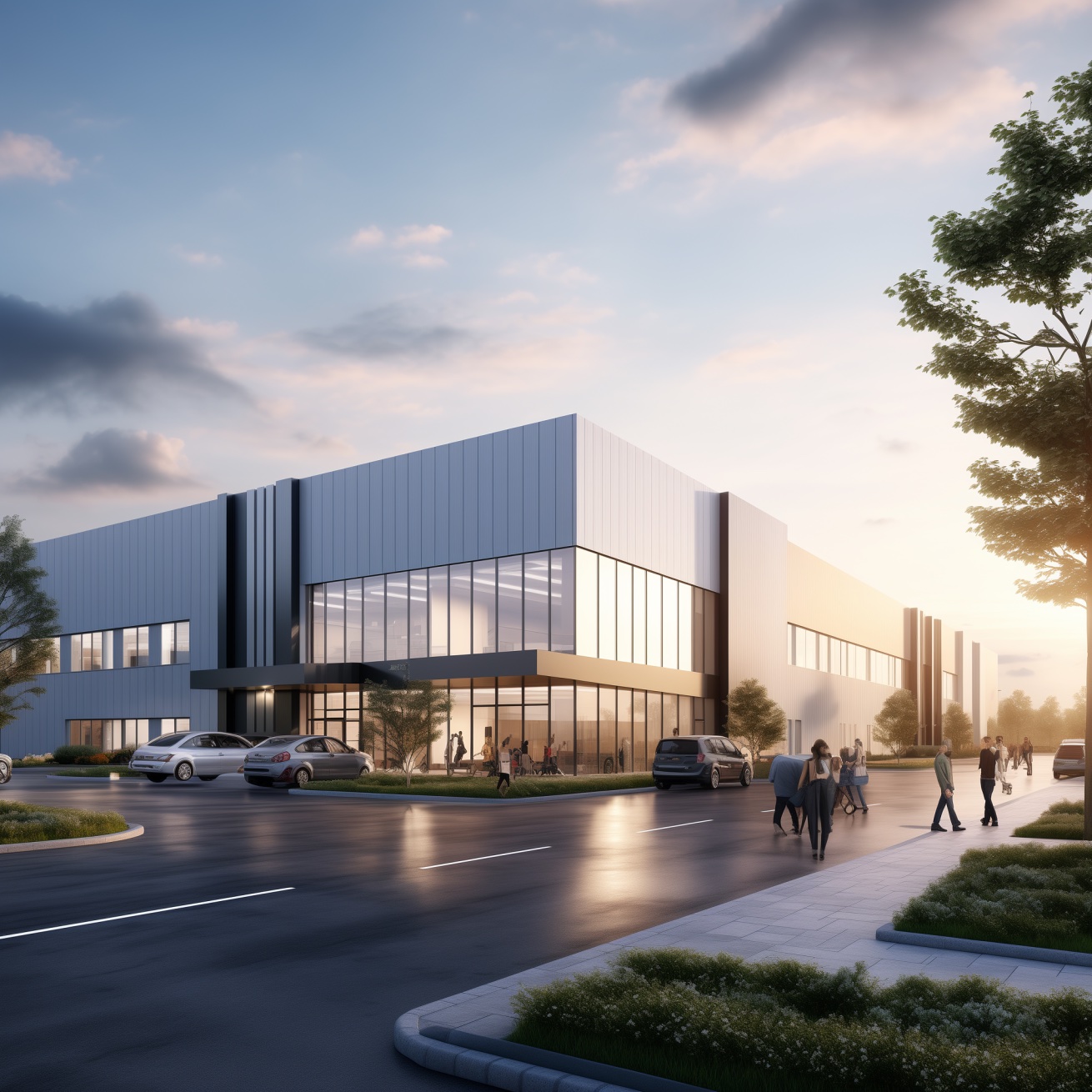Industrial real estate in Poland
Poland’s consistent and stable economic growth, strong industry, the expansion of e-commerce, and its central location in Europe are only a few of the elements driving the robust development of the warehouse and industrial property sector in Poland.
Poland’s warehouse and industrial real estate sector set a record with 4.4 million m2 of new supply in 2022, making it a European leader. The total storage and industrial space in the country is approaching 30 million m2.
These are Poland’s main warehouse regions:
- Warsaw: +/- 6 mio m2
- Upper Silesia: +/- 5 mio m2
- Central Poland: +/- 4 mio m2
- Wrocław: +/- 3,7 mio m2
- Poznań: +/- 3,5 mio m2
With rental prices between 3,5 – 7,5 euro / m2, there certainly is a lot of potential for investors who are looking for opportunities in the market.
Over 50% of net demand was concentrated in Warsaw, Upper Silesia, and Central Poland, each with more than 200,000 sqm of rented space. The six largest purchases involved tenants from the retail industry, which included e-commerce. As a result, retail accounted for roughly 45% of overall demand. Note, however that one single e-commerce player was responsible for at least 270.000 m2 for 2 leases…
Which markets will become popular?
Poland’s industrial market has grown from five to eight key regions:
- Warsaw
- Łódź
- Upper Silesia
- Greater Poland
- Lower Silesia
- Szczecin
- Tricity
- Kraków
The final two markets are particularly important, since their importance has grown in recent years and they have exceeded the threshold of one million square meters of total stock. Among the ambitious regions is Western Poland with Lubuskie and Silesia being 2 upcoming regions, which faces stiff competition from Szczecin, Greater Poland, and Lower Silesia. Because of the uncertain geopolitical scenario, most developers have been and will continue to be somewhat quiet in their activities in eastern Poland.
The potential of “Last-Mile-Delivery” warehouses
E-commerce activity has increased significantly in recent years around the world, and Poland is no exception. As online shopping becomes more popular, the demand for effective last-mile delivery services has increased dramatically. Several factors influence the possibility of a rise in last-mile delivery warehouses in Poland:
E-Commerce Growth: The ongoing rise of e-commerce in Poland is a major driver of the demand for additional last-mile delivery warehouses. Consumers prefer the convenience of internet purchasing, and firms are changing to suit the demand. As the number of online purchases increases, so does the demand for strategically positioned warehouses to ensure timely and cost-effective deliveries. The major players already took their positions in the market.
Urbanization and Population Density: Poland is rapidly urbanizing, with regional cities housing a sizable proportion of the population. Cities with high population density require a network of last-mile delivery warehouses to ensure timely and effective delivery to clients. Establishing warehouses closer to regional urban areas reduces delivery times and costs, while also addressing traffic congestion and streamlining delivery routes.
Customers’ Expectations for Faster Delivery: Customers increasingly expect speedier and more reliable delivery services. To meet these expectations, organizations are looking into ways to reduce last-mile delivery time. Establishing more warehouses across the country, particularly in critical locations, allows businesses to reach clients more rapidly, increasing customer satisfaction and retention. Therefore, we believe that sourcing the right industrial project land near regional roads has a huge potential for investors looking to enter the market.
Technological improvements: Technological improvements such as route optimization algorithms, automation, and tracking systems are improving last-mile delivery efficiency and cost effectiveness. These developments allow businesses to handle bigger numbers of goods while streamlining their delivery procedures. Investing in last-mile delivery facilities equipped with cutting-edge technology is critical for remaining competitive in the industry.
Altering Consumer Behavior: The COVID-19 pandemic has hastened the shift to internet buying, and this trend is likely to continue. As more individuals become accustomed to having things delivered to their doorsteps, businesses will continue to spend in increasing their last-mile delivery infrastructure.
Looking to invest in industrial real estate in Poland?
Look no further. We are happy to help you find the most optimal investment opportunities: project land with building permits, concept plans and a well-prepared business plan for real estate investors seeking a high potential return on their investment. Together with our partners in Poland we realize your industrial real estate project. Contact us for more information about specific opportunities.




